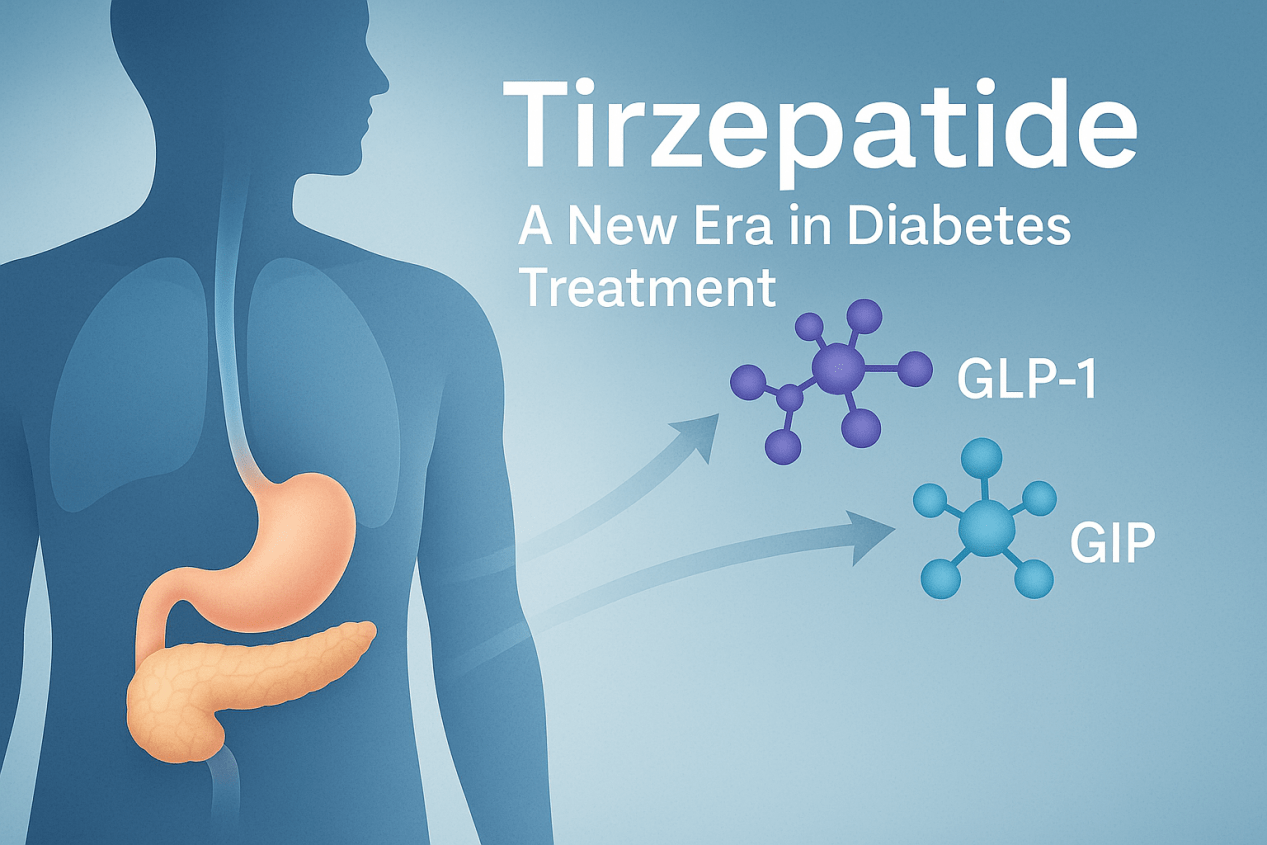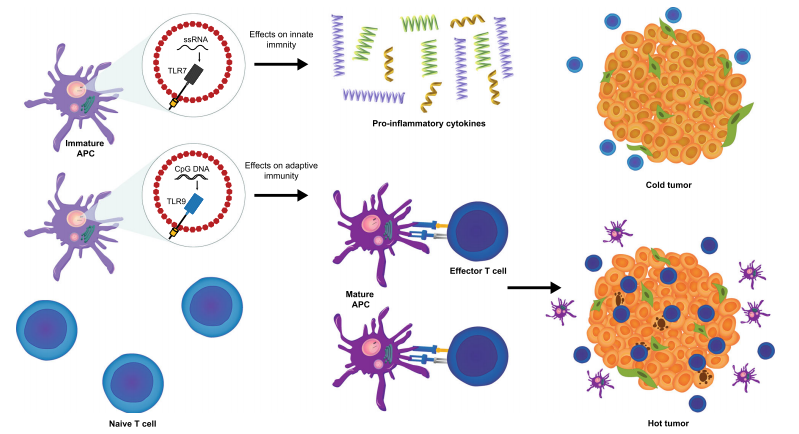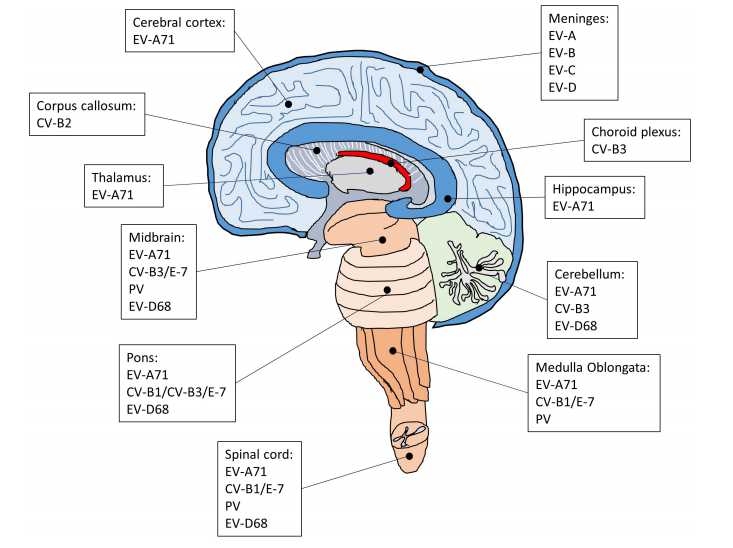Tirzepatide (Mounjaro): A Dual-Action Breakthrough for Type 2 Diabetes and Weight Loss
Abstract
Tirzepatide, marketed as Mounjaro, is a groundbreaking dual GIP and GLP-1 receptor agonist approved for the treatment of type 2 diabetes. Unlike traditional therapies, it offers a dual mechanism that improves glycemic control and promotes significant weight loss. Clinical trials have shown Tirzepatide to be more effective than leading GLP-1 agonists like semaglutide in reducing HbA1c and body weight. Its once-weekly injection format enhances convenience and adherence. With promising outcomes in both diabetic and non-diabetic populations, ongoing research is exploring Tirzepatide’s broader use in obesity and cardiovascular risk reduction. This therapy marks a paradigm shift toward integrated metabolic disease management and offers a transformative option for patients with type 2 diabetes and related conditions.
Introduction to Tirzepatide
In recent years, the landscape of type 2 diabetes management has evolved rapidly with the introduction of innovative therapies targeting both blood sugar control and associated complications like obesity. Among these breakthroughs, Tirzepatide has emerged as a promising and revolutionary medication. Approved by the U.S. Food and Drug Administration (FDA) in 2022 under the brand name Mounjaro, Tirzepatide represents a new class of diabetes treatment that works differently from traditional drugs.
Tirzepatide is a dual glucose-dependent insulinotropic polypeptide (GIP) and glucagon-like peptide-1 (GLP-1) receptor agonist. This means it activates two key hormones involved in regulating insulin secretion, satiety, and blood glucose levels. Unlike single-pathway medications, Tirzepatide’s dual mechanism helps improve blood sugar control while also contributing to significant weight loss — a major advantage for patients who are overweight or obese.
The clinical results have been impressive. In head-to-head trials, Tirzepatide outperformed existing GLP-1 receptor agonists such as semaglutide in reducing HbA1c and body weight. Its once-weekly injectable format also offers convenience for patients managing a chronic condition.
As obesity and diabetes continue to rise globally, Tirzepatide is being hailed not only for its glycemic benefits but also for its potential role in addressing metabolic health holistically. Researchers are also exploring its application in treating obesity independently of diabetes, pointing toward broader therapeutic implications.
Introduction to Tirzepatide: A New Era in Diabetes Treatment
The fight against type 2 diabetes has entered a transformative phase with the development of new medications that not only control blood sugar levels but also target related issues like obesity and metabolic dysfunction. Among these emerging treatments, Tirzepatide is being hailed as one of the most significant breakthroughs in recent years. Approved by the U.S. Food and Drug Administration (FDA) in 2022 and marketed under the brand name Mounjaro, Tirzepatide introduces a novel approach to managing type 2 diabetes.
What sets Tirzepatide apart from existing medications is its dual-incretin mechanism of action. It mimics the activity of two hormones naturally produced in the gut: glucagon-like peptide-1 (GLP-1) and glucose-dependent insulinotropic polypeptide (GIP). These hormones play a vital role in regulating blood sugar levels, stimulating insulin secretion, reducing appetite, and slowing gastric emptying. By targeting both GLP-1 and GIP receptors, Tirzepatide delivers enhanced glycemic control compared to drugs that act on GLP-1 alone.

But Tirzepatide’s benefits don’t stop at blood glucose regulation. Clinical trials have demonstrated that it can lead to significant weight loss, making it a powerful tool for patients who struggle with obesity—a common comorbidity in type 2 diabetes. In fact, in head-to-head studies, Tirzepatide not only lowered HbA1c more effectively than existing medications like semaglutide, but also helped patients lose more body weight, with some losing over 20% of their total body weight in extended trials.
This dual benefit—controlling blood sugar and reducing weight—positions Tirzepatide as a unique therapy with the potential to reshape how metabolic diseases are treated. Researchers are now exploring its effectiveness beyond diabetes, particularly in the treatment of obesity as a standalone condition.
Tirzepatide is administered via subcutaneous injection once weekly, which improves convenience and compliance compared to daily medications. Its safety profile is generally consistent with other GLP-1-based therapies, with common side effects including nausea, diarrhea, and decreased appetite.
As the prevalence of type 2 diabetes continues to rise globally, especially in younger populations and developing nations, Tirzepatide offers new hope for patients and healthcare systems alike. It represents a paradigm shift in diabetes care—one that addresses the underlying metabolic dysfunction, not just the symptoms of high blood sugar.
What is Tirzepatide? Understanding Its Unique Role in Diabetes Management
Tirzepatide is a first-in-class medication for type 2 diabetes that represents a novel category of drugs known as dual incretin receptor agonists. It was developed by Eli Lilly and Company and is sold under the brand name Mounjaro. Approved by the FDA in May 2022, Tirzepatide has quickly gained attention not just for its ability to control blood glucose but also for its unprecedented impact on body weight—two of the most critical challenges in managing type 2 diabetes.
The Science Behind Tirzepatide
Tirzepatide is designed to mimic the effects of two gut hormones:
Glucagon-like peptide-1 (GLP-1)
Glucose-dependent insulinotropic polypeptide (GIP)
Both are classified as incretins, hormones that stimulate insulin secretion in response to meals. By activating both the GLP-1 and GIP receptors, Tirzepatide enhances insulin release when glucose levels are high, decreases glucagon secretion (which would otherwise raise blood sugar), and slows gastric emptying. This combination results in:
Lower post-meal glucose spikes
Improved insulin sensitivity
Reduced appetite and caloric intake
These effects make Tirzepatide more effective than traditional GLP-1 receptor agonists (like liraglutide and semaglutide), which only target one pathway.
A Game Changer for Weight Loss and Glycemic Control
Tirzepatide is not just another glucose-lowering drug—it’s redefining what is possible in metabolic therapy. In the SURPASS clinical trial program, patients treated with Tirzepatide experienced:
HbA1c reductions up to 2.5%
Weight loss up to 22.5% of body weight in some trials
These numbers surpass those seen in many existing diabetes medications and even some weight loss drugs. This dual benefit is especially important because more than 80% of people with type 2 diabetes are overweight or obese, and losing weight often helps improve insulin resistance.
Brand Name: Mounjaro
Under the trade name Mounjaro, Tirzepatide is administered once weekly via a pre-filled pen injector. The convenience of a weekly injection helps improve adherence among patients who may struggle with daily medications. The starting dose is typically 2.5 mg per week, which is gradually increased based on the patient’s response and tolerance, up to a maximum of 15 mg per week.
Global Reach and Expanding Indications
Though currently approved for type 2 diabetes, Tirzepatide is undergoing additional studies for obesity treatment in non-diabetic individuals, as well as cardiovascular outcome trials. The results could lead to broader indications, further reinforcing its value in addressing chronic metabolic diseases.
How Does Tirzepatide Work? The Dual Hormone Advantage
Tirzepatide offers a unique dual mechanism of action that sets it apart from other type 2 diabetes medications. While many treatments focus on a single metabolic pathway, Tirzepatide activates two distinct gut hormone receptors—a therapeutic innovation that has led to significant improvements in both blood glucose regulation and weight management.
GLP-1 and GIP: The Incretin Synergy
Tirzepatide is the first medication to act as a dual agonist of:
Glucagon-like peptide-1 (GLP-1) receptor
Glucose-dependent insulinotropic polypeptide (GIP) receptor
These two hormones are part of the incretin system, a group of gut-derived peptides released in response to food intake. In people with type 2 diabetes, this incretin effect is diminished. Tirzepatide addresses this problem by mimicking both hormones, restoring and amplifying the body’s natural insulin response.
Mechanism of Action: Step-by-Step
Enhanced Insulin Secretion
Tirzepatide stimulates glucose-dependent insulin release from pancreatic beta cells. This means it helps lower blood sugar only when glucose levels are elevated, reducing the risk of hypoglycemia.
Glucagon Suppression
It inhibits the release of glucagon, a hormone that increases blood sugar by stimulating the liver to release glucose.
Delayed Gastric Emptying
Tirzepatide slows how quickly food moves from the stomach to the small intestine, which moderates post-meal blood sugar spikes and promotes a feeling of fullness.
Appetite and Weight Regulation
By targeting the central nervous system, especially brain regions involved in hunger regulation, Tirzepatide reduces appetite, leading to caloric intake reduction and weight loss.
Improved Insulin Sensitivity
Emerging research suggests that GIP receptor activation may enhance insulin action in peripheral tissues, further improving glucose disposal.
Why the Dual Targeting Matters
While GLP-1 receptor agonists like semaglutide are already successful in treating type 2 diabetes, combining it with GIP signaling unlocks greater benefits. Studies suggest that GIP may enhance the tolerability of GLP-1 therapies, particularly by reducing gastrointestinal side effects. Moreover, GIP may directly affect adipose tissue and metabolic signaling, contributing to greater weight loss outcomes.
This dual mechanism is believed to explain why Tirzepatide achieves:
Greater HbA1c reductions (up to 2.5%)
More significant weight loss (up to 22% body weight in some studies)
Ongoing Research and Implications
Tirzepatide’s mechanism opens the door to multi-target metabolic therapy—a promising future direction for treating not only type 2 diabetes, but also obesity, fatty liver disease (NAFLD), and cardiovascular risks. Its mechanism is being closely studied in long-term trials, including the SURPASS and SURMOUNT trial series.
Clinical Benefits and Results of Tirzepatide: What the Studies Show
Tirzepatide has quickly established itself as a groundbreaking medication not only for type 2 diabetes but also for weight management. Its unique dual action on GLP-1 and GIP receptors has yielded remarkable clinical outcomes, as evidenced by multiple large-scale, peer-reviewed clinical trials. From substantial HbA1c reductions to significant weight loss, the evidence paints a powerful picture of Tirzepatide’s therapeutic potential.
1. HbA1c Reduction: Superior Glycemic Control
One of the most important clinical goals in managing type 2 diabetes is reducing hemoglobin A1c (HbA1c), a marker of average blood glucose over time. In the SURPASS trial program, which evaluated Tirzepatide across multiple global populations, patients experienced:
Up to 2.5% reduction in HbA1c
A higher proportion of patients reaching target HbA1c < 7%, and even < 5.7% (a near-normal level)
In SURPASS-2, Tirzepatide was compared directly to semaglutide 1 mg (a leading GLP-1 agonist). All three doses of Tirzepatide (5 mg, 10 mg, and 15 mg) outperformed semaglutide in glycemic reduction, with statistical significance.
2. Weight Loss: Comparable to Bariatric Outcomes
Tirzepatide has shown an unprecedented effect on body weight among antidiabetic drugs:
Average weight loss of 10.5–15 kg (23–33 lbs) in type 2 diabetes patients
Even greater results (up to 22.5% body weight reduction) in non-diabetic individuals with obesity, per the SURMOUNT-1 trial
This places Tirzepatide in competition with dedicated weight-loss medications and even some bariatric procedures, making it a dual-action solution for metabolic disease.
3. Cardiovascular and Metabolic Benefits
Although not yet conclusively proven, early data suggest that Tirzepatide may:
Improve blood pressure and lipid profiles
Reduce markers of inflammation and insulin resistance
Potentially lower cardiovascular risk, though large outcome trials like SURPASS-CVOT are underway to confirm this
Such benefits are particularly relevant, as cardiovascular disease is the leading cause of death among people with type 2 diabetes.
4. Tolerability and Side Effects
Tirzepatide is generally well-tolerated. The most common side effects are gastrointestinal, including:
Nausea
Diarrhea
Vomiting
Constipation
These are dose-dependent and usually mild to moderate. Notably, hypoglycemia risk is low when Tirzepatide is not combined with insulin or sulfonylureas.
5. Patient Satisfaction and Adherence
With its once-weekly injection, user-friendly delivery pen, and rapid, visible results, Tirzepatide has reported high levels of patient satisfaction. This convenience boosts adherence—a key factor in long-term diabetes control.
Conclusion
Tirzepatide represents a major leap forward in the treatment of type 2 diabetes and obesity. By targeting both GLP-1 and GIP receptors, it offers a dual-action approach that delivers superior blood sugar control and substantial weight loss—two key goals in managing metabolic disease. Clinical trials have shown that Tirzepatide consistently outperforms existing medications, making it a game-changing therapy for patients and providers alike. Its once-weekly injection format adds convenience, while its expanding research into cardiovascular and obesity-related benefits points toward even broader uses in the future. As healthcare continues to shift toward integrated metabolic management, Tirzepatide is poised to become a cornerstone in modern treatment strategies. Patients considering this therapy should consult with their healthcare provider to determine if Tirzepatide is the right fit for their individual needs. With its innovative design and proven results, Tirzepatide is truly paving the way for a healthier future.
References
Frias, J. P., Davies, M. J., Rosenstock, J., et al. (2021). Tirzepatide versus semaglutide once weekly in patients with type 2 diabetes. New England Journal of Medicine, 385(6), 503–515.
https://www.nejm.org/doi/abs/10.1056/NEJMoa2107519
Jastreboff, A. M., et al. (2022). Tirzepatide once weekly for the treatment of obesity. New England Journal of Medicine, 387(3), 205–216.
https://www.nejm.org/doi/full/10.1056/NEJMoa2206038
Del Prato, S., Kahn, S. E., Pavo, I., et al. (2021). Tirzepatide versus insulin glargine in type 2 diabetes and increased cardiovascular risk (SURPASS-4). The Lancet, 398(10313), 1811–1824.
https://www.thelancet.com/journals/lancet/article/PIIS0140-6736(21)02188-7/abstract
Campbell, J. E., & Drucker, D. J. (2013). Pharmacology, physiology, and mechanisms of incretin hormone action. Cell Metabolism, 17(6), 819–837.
https://www.cell.com/cell-metabolism/fulltext/S1550-4131(13)00150-2




